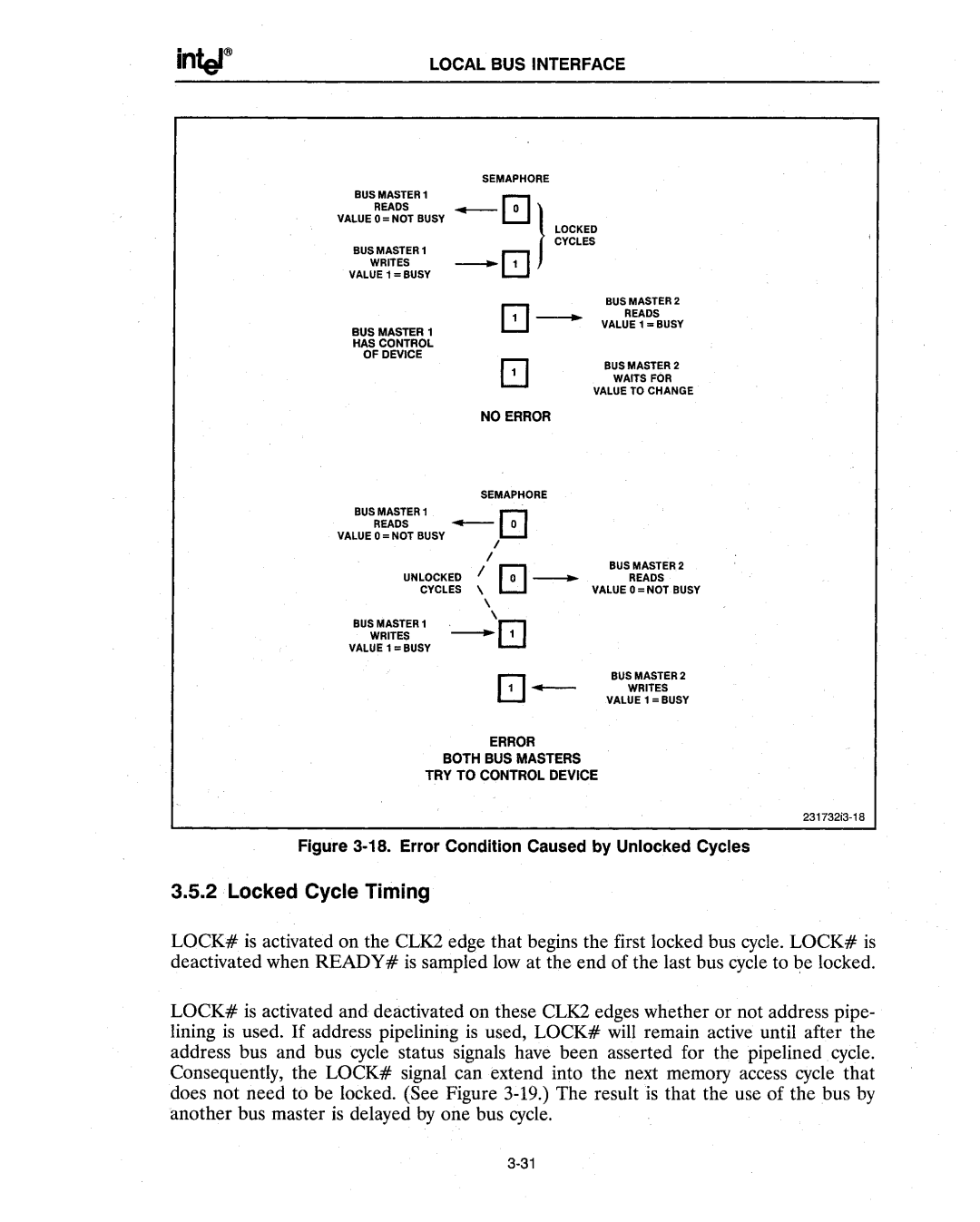
LOCAL BUS INTERFACE
SEMAPHORE
BUS MASTER 1
READS
VALUE 0 = NOT BUSY
BUS MASTER 1
WRITES
VALUE 1 = BUSY
BUS MASTER 1 HAS CONTROL OF DEVICE
-EJj
- 8
LOCKED
CYCLES
BUS MASTER 2
READS
VALUE 1 = BUSY
BUS MASTER 2
WAITS FOR
VALUE TO CHANGE
|
| NO ERROR |
| ||
|
| SEMAPHORE |
| ||
BUS MASTER 1 |
|
| r::1 |
| |
READS |
| ||||
VALUE O=NOT BUSY |
|
| / |
| |
|
| / | r;;1_ | BUS MASTER 2 | |
UNLOCKED | / | ||||
READS | |||||
CYCLES | \ | L.:J | VALUE 0 = NOT BUSY | ||
BUS MASTER 1 |
| \ | \ EJ |
| |
WRITES | - |
| 1 |
| |
VALUE 1 = BUSY |
|
|
| ||
|
|
| VALUE 1 = BUSY | ||
|
|
|
| BUS MASTER 2 | |
WRITES
ERROR
BOTH BUS MASTERS
TRY TO CONTROL DEVICE
Figure 3-18. Error Condition Caused by Unlocked Cycles
3.5.2 Locked Cycle Timing
LOCK# is activated on the CLK2 edge that begins the first locked bus cycle. LOCK# is deactivated when READY# is sampled low at the end of the last bus cycle to be locked.
LOCK# is activated and deactivated on these CLK2 edges whether or not address pipe- lining is used. If address pipelining is used, LOCK# will remain active until after the address bus and bus cycle status signals have been asserted for the pipelined. cycle. Consequently, the LOCK# signal can extend into the next memory access cycle that does not need to be locked. (See Figure
